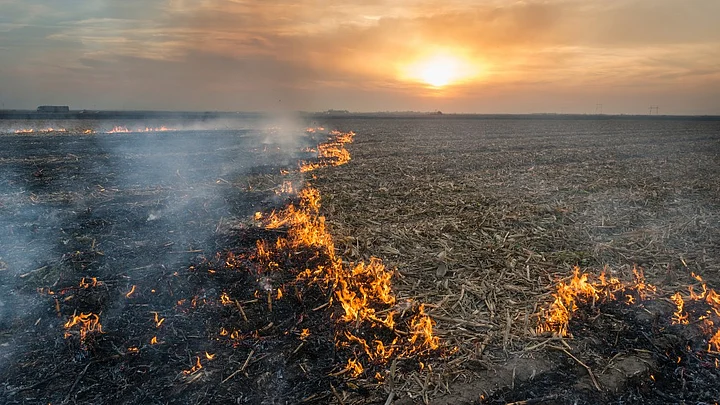Unlike north India, crop stubble burning is not prevalent in Odisha even though it has started making inroads unto several parts of the coastal state.
Air pollution due to stubble burning has turned a critical health hazard in north India.
Agriculture in Odisha is the mainstay of the majority of the populace. The state is one of the largest producers of rice in the country. The state government has fixed a target of procuring 60 lakh metric tonnes of paddy during the kharif marketing season (KMS), 2019-2020.
However, instead of burning the stubble, the farmers in Orissa, use the paddy straw in various ways such as cattle feed, compost manure, roofing of thatched houses, biomass energy and mushroom cultivation.
"In Odisha, we don't resort to paddy residue burning unlike in north India where pollution level has increased manifold due to crop stubble burning and other reasons.”
"I have purchased paddy straw of Rs 50,000 for mushroom cultivation. I have been doing mushroom cultivation for several years. Sometimes, I have purchased paddy straw at a higher price as many people have adopted the cultivation since it gives good profit," said Stephenson Sahu from Patharkhamb village in Dhenkanal district.
Moreover, Odisha is going to have a Second Generation (2G) Ethanol Bio-Refinery, first in the country to produce ethanol using rice straw as feedstock, in Bargarh district, one of the major paddy producing districts in the state.
The bio-refinery to be set up by Bharat Petroleum Corporation Limited (BPCL) will utilise about two lakh tonnes of rice straw annually as feedstock which will be sourced from nearby locations.
The agriculture sector provides employment to more than 60 per cent of the population, making it the largest employment sector of the state.
The state has a total geographical area of 155.71 lakh hectares of which total cultivated land is about 61.80 lakh hectares, which constitute about 39.69% of the total geographical area of the state. Small and marginal farmers form more than 90% of the farming community, according to a report of the Agriculture Department.
(This story was auto-published from a syndicated feed. No part of the story has been edited by FIT.)
(FIT is launching its #PollutionKaSolution campaign. Join us by becoming an anti-air pollution warrior. Send in your questions, your stories of how to tackle air pollution and your ideas to FIT@thequint.com)

